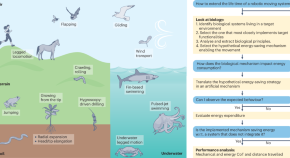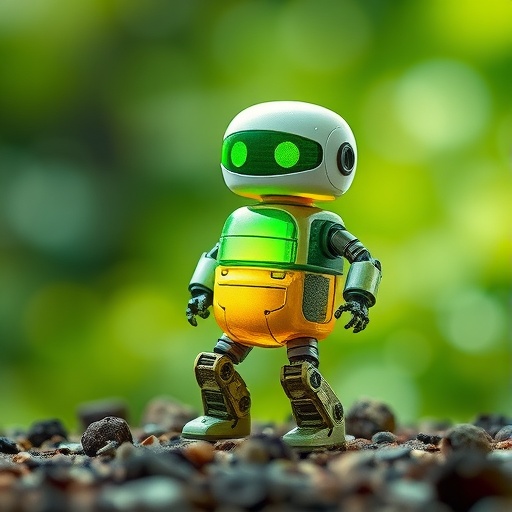


Unlike living organisms, which evolved to adapt to dynamic conditions, robots often become less agile in complex scenarios, prompting roboticists to reduce environmental complexities to ease robot operations. However, the strategies implemented by animals and plants to achieve energy-saving movements in complex environments can inspire the design of more resilient autonomous robots with lower energy consumption. In nature, movement strategies evolved to balance energy expenditure and resource acquisition to survive in unpredictable environments. This is particularly relevant for robots operating over large distances or in resource-limited conditions. In this Review, we present a performance analysis of movement strategies in both natural and artificial systems and across different environments — terrain, soil, underwater and air — and emphasize how energy-saving design principles can be used to widen the operativity of robots. We discuss the importance of the cost of transport as a metric for assessing movement economy and propose its use, not only for animals, but also to benchmark movement by growth and seed dispersal in plants. Despite the profound differences in energy harvesting strategies, as plants produce organic matter using energy from light and animals obtain energy by consuming organic matter, studying both can lead to energy-saving designs in bioinspired robots.
Mazzolai, B., Del Dottore, E., Speck, T. et al. Energy-saving movement strategies in animals and plants for robot design.
Nat Rev Bioeng (2025). https://doi.org/10.1038/s44222-025-00344-z
bu içeriği en az 2500 kelime olacak şekilde ve alt başlıklar ve madde içermiyecek şekilde ünlü bir science magazine için İngilizce olarak yeniden yaz. Teknik açıklamalar içersin ve viral olacak şekilde İngilizce yaz. Haber dışında başka bir şey içermesin. Haber içerisinde en az 14 paragraf ve her bir paragrafta da en az 80 kelime olsun. Cevapta sadece haber olsun. Ayrıca haberi yazdıktan sonra içerikten yararlanarak aşağıdaki başlıkların bilgisi var ise haberin altında doldur. Eğer bilgi yoksa ilgili kısmı yazma.:
Subject of Research:
Article Title:
Article References:
Mazzolai, B., Del Dottore, E., Speck, T. et al. Energy-saving movement strategies in animals and plants for robot design.
Nat Rev Bioeng (2025). https://doi.org/10.1038/s44222-025-00344-z
Image Credits: AI Generated
DOI:
Keywords:
Tags: adaptation strategies in naturebioinspired energy harvestingbiomimicry in autonomous systemscost of transport in roboticsenergy consumption in roboticsenergy efficiency strategies for robotsenergy-saving movement techniquesmovement economy assessmentnature-inspired roboticsoptimizing robotic operativity in complex environmentsperformance analysis of robotic movementsresilient robotic design principles




